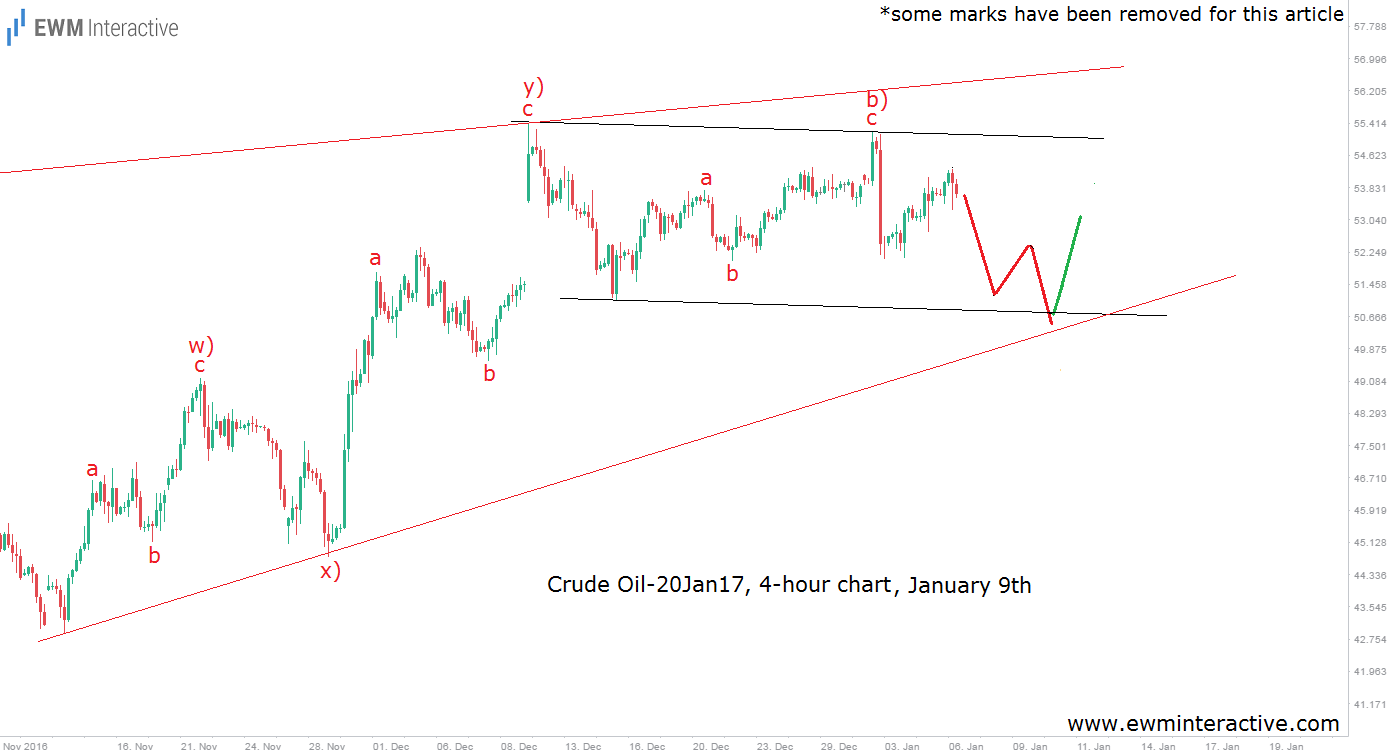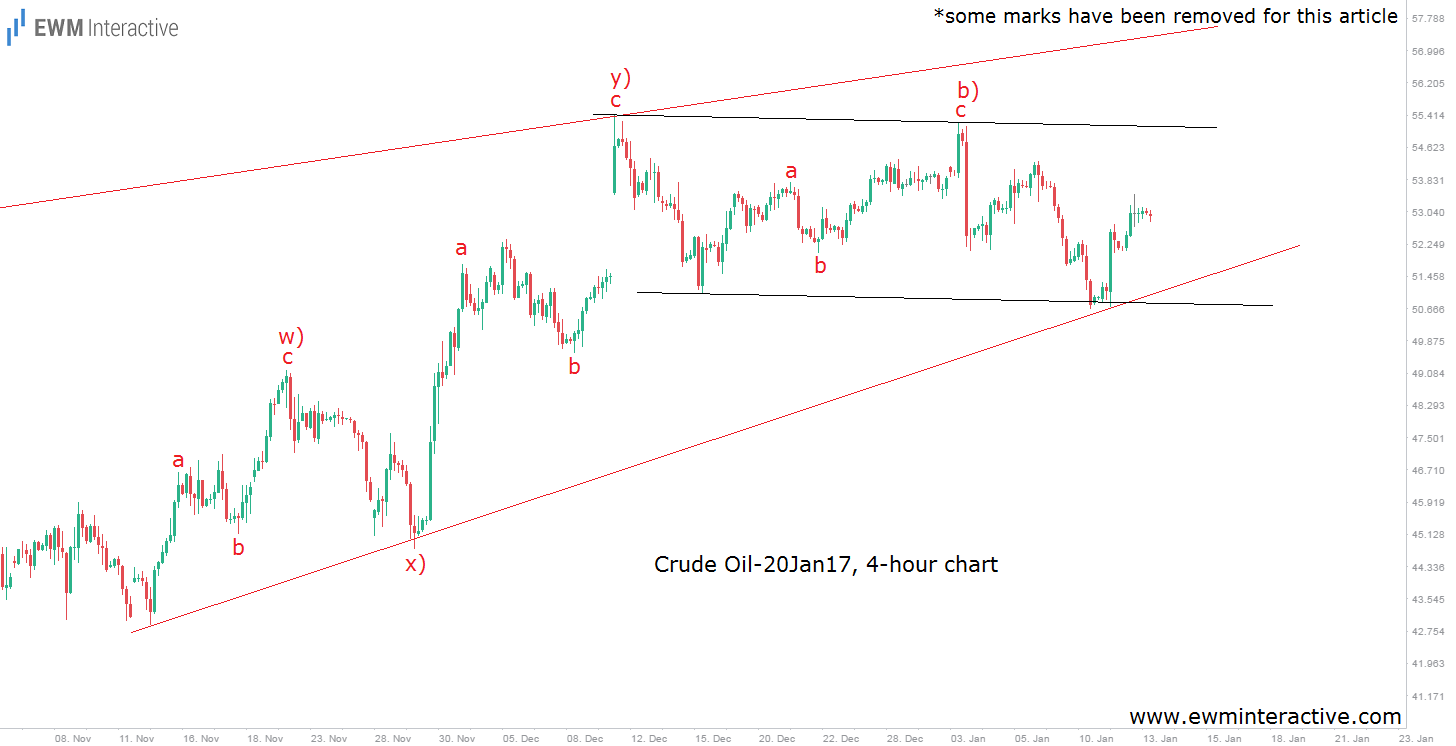“The current pullback is likely to take crude oil prices down to $50.50, before the bulls return…” This was the last sentence of the premium crude oil analysis we sent to clients five days ago, before the markets opened on Monday, January 9. Crude oil closed at $53.68 on Friday, January 6, after a recovery from as low as $52.10. But instead of joining the bulls and hoping for a new multi-month high, we thought more weakness should be expected first. The only reason for our bearishness was the chart below.
According to the Elliott Wave Principle, oil’s decline from $55.42 was not over and was supposed to breach the previous low at $51.08. Corrective price action often develops between the parallel lines of a channel. In this case, the lower line of the projected corrective channel suggested the bears were aiming at the support area near $50.50, where a bullish reversal could be expected. The trading week is almost over now, so let’s see what has happened to the price of crude oil since that forecast.
Oil did not reach $50.50. However, it fell by 3 dollars a barrel to $50.69 on Tuesday. Then, just as expected, prices touched the lower line of the channel and the bulls returned to the party, lifting oil to $53.47 as of yesterday, January 12. According to conventional technical analysis, the drop below $51.08 would be categorized as a “false breakout”, because of the sharp recovery, which followed. With the Elliott Wave Principle, on the other hand, there are no such unpleasant surprises. It is the only technical method we know of, which can help traders anticipate these fake breakouts and take advantage of them, instead of falling victims to their traps.
